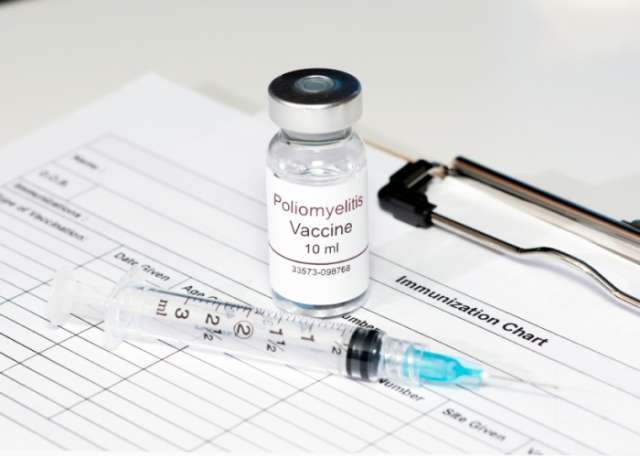But what happens when polio is finally gone? To make sure it does not come back, worldwide vaccination will have to continue. To keep producing a vaccine with current technology, we will have to retain enormous live stocks of the polio virus. This will run the risk of the virus escaping into the wild and restarting the disease – the opposite of what the vaccination programme is designed to do.
My colleagues and I are part of an international effort to come up with a new way of producing a polio vaccine that does not rely on us keeping the virus alive. The basic principle of a vaccine is to expose the body to a molecule known as an antigen that stimulates the immune system into fighting the related disease. This way, when the body encounters the actual disease, it has learnt how to react to it.
Vaccines have been in use in one form or another since the 10th century when ancient Chinese healers exposed healthy patients to powdered scabs from smallpox sufferers. Modern vaccine development relies on more controlled and safer forms of antigen exposure. In the case of virus-carried diseases like polio, the antigen is most often a weakened or deactivated version of the virus, made from a live strain.
One alternative idea is to develop a virus-like particle (VLP) assembled from the proteins that make up the coat or “capsid” of the virus. They contain no genetic material from the virus and so are sometimes called “empty capsids”. This makes them safe to manufacture and use without risk of spreading the actual disease. Scientists have already used this method to develop successful vaccines against hepatitis B and human papillomavirus (HPV)
To create a VLP for poliovirus, we would like to use empty capsids that are made naturally during its normal growth cycle. The problem is that, without any genetic material inside them, these are structures are unstable when exposed to heat.
Our research group has tried a number of ways to create stable capsids for the VLPs. Our first step was to select strains of poliovirus that were inherently more resistant to heat. We repeatedly heated a sample of the virus to increasing temperatures and then exposed it to cultured cells. This enabled us to identify virus strains that were still infectious to the cells – and therefore stable – even when heated up to 57℃.
To further demonstrate these mutant strains were more stable, we used a test known as a particle stability thermal release assay (PaSTRy). This involves staining the molecules that make up the virus’s capsid, and the genetic material, inside with dyes that fluoresce (give off light) when exposed to the environment. Our more stable viruses didn’t fluoresce after they had been heated, which showed they were still in tact.
We then isolated the mutations that made these strains so resistant to heat and used them as a model to produce empty capsids that had the desired stability. Other researchers in our group have also identified mutations that reduce the capsids’ sensitivity to temperature changes and so could also generate more stable VLPs. Some of the mutant strains are proving to be even more stable than the inactivated polio vaccine currently in use.
Making the vaccine
We still need to work out the best way to use these VLPs to produce a viable vaccine. In particular, we want to develop a novel system that will produce VLPs in large numbers and with a minimum of specialised equipment. Several different systems are currently being studied including yeast, insect or plant cells. In most cases, we use a type of DNA molecule called plasmids to drive the yeast, plant or bacterial cells to produce these proteins. The VLPs are then assembled from these proteins either within the cell or during the purification process.
At the University of Leeds, we are focused on using a yeast species, Pichia pistoris. Yeast has a significant advantage over other systems because it can be grown in large quantities using fermenters. This makes it relatively simple to use them to produce vaccines on a large scale, something that has already been demonstrated for the Chikungunya virus.
Once we can replicate this process for the polio vaccine and manufacture it on a large scale, we can start looking forward to the day when we are confident the disease has been banished for good.
Keith Grehan is a postdoctoral researcher at the University of Leeds. This article first appeared on The Conversation (theconversation.com)
The original article was published in the Independent.
More about: #vaccine
















































